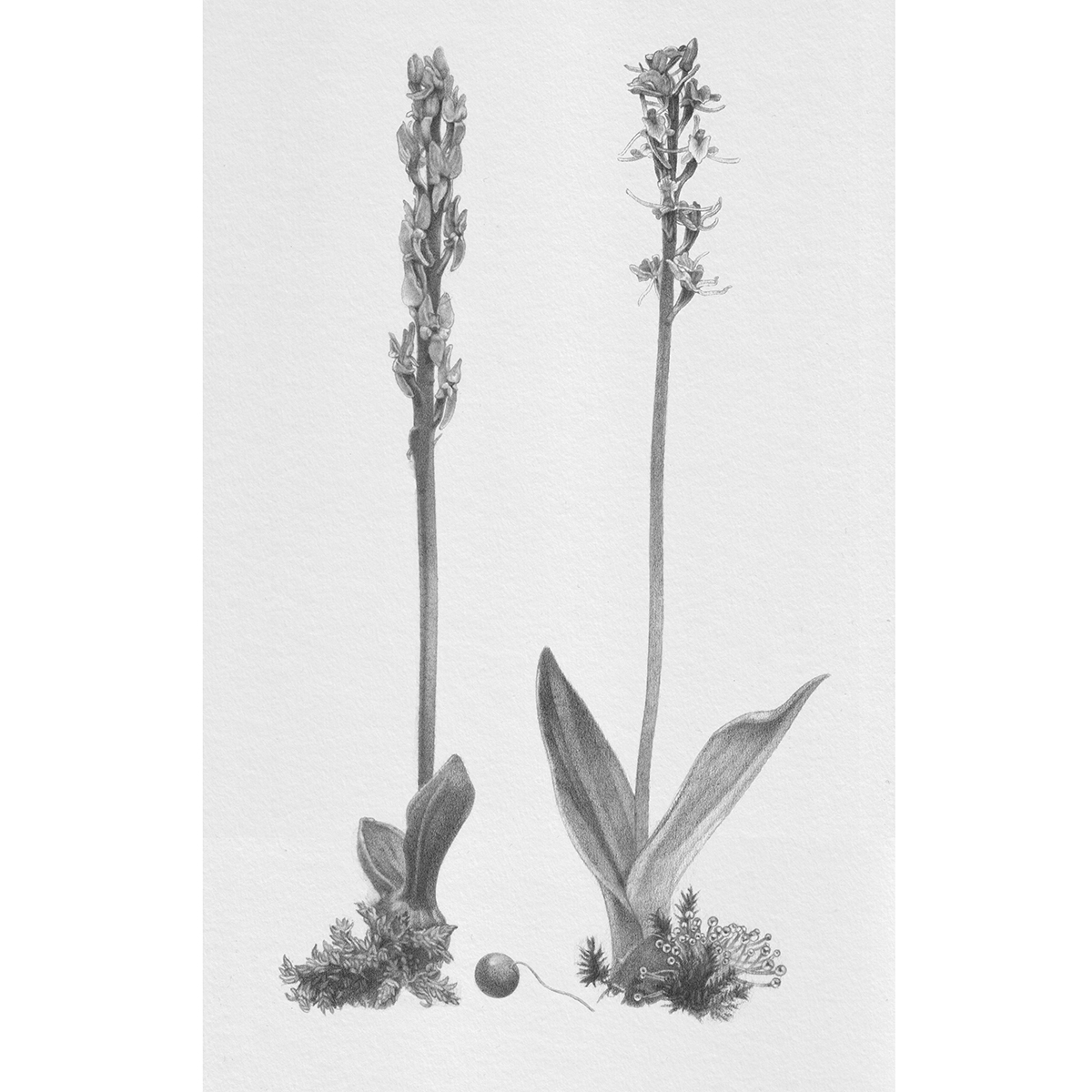Hammarbya paludosa (Bog Adder's Mouth) and Líparis loesélii (Fen Orchid)
Orchids in the northern hemisphere tend to be small and inconspicuous, but their beauty and complexity remain unmatched. Studies suggest that wild orchids here originated and then spread to the rest of the world, making these humble beauties share their home with their ancestors.
Due to their size, many northern orchids are difficult to find. They can spend years underground before emerging for the frst time. This makes observing and studying their current populations challenging. However, their endangered status makes conservation a clear priority. In some areas, only a few specimens remain.
Despite being one of the most incredibly diverse plant groups, orchids are not exempt from danger. About fifty percent of them are at risk of disappearing. Drainage and pesticides make these orchids particularly vulnerable as they struggle to find suitable environments or the specific fungi their survival often depends on.
Sometimes their occasional terrestrial appearances can be surprisingly delightful. For example, the rare bog orchid, Hammarbya paludosa, has been found in just ten specimens within isolated peat bog formations in the Alps, at the remarkable altitude of 1800 meters, the highest recorded for this species. To me, personally, these are greetings from home.
Graphite pencil, Fabriano paper
2023


